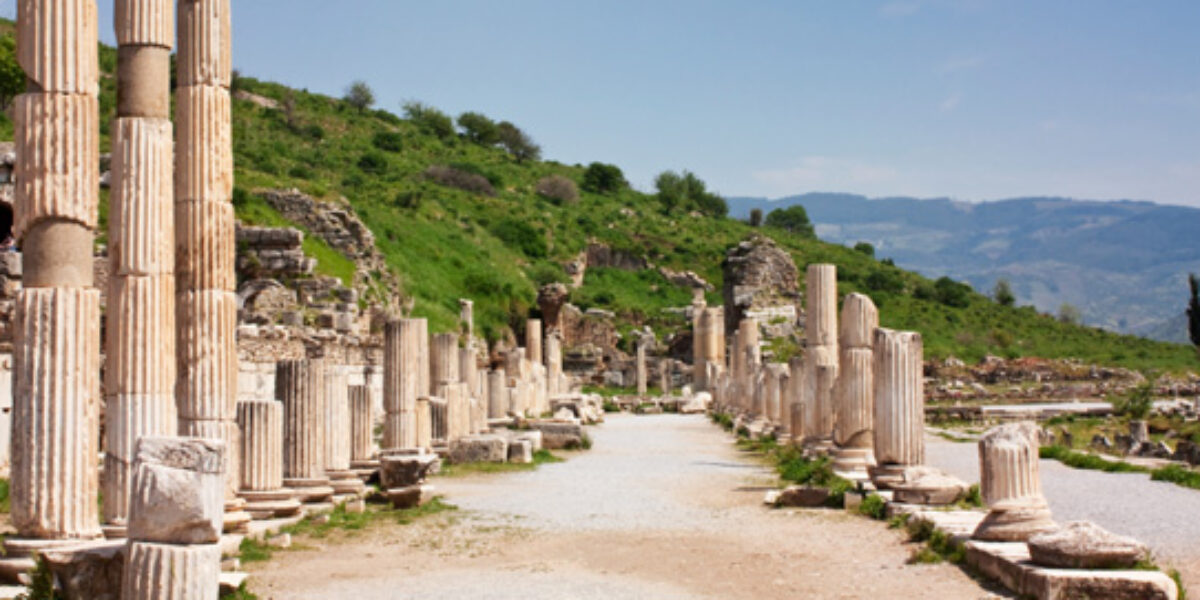With unity in the body of Christ as a central theme, Ephesians contains instructions about how to live as one church, despite the differences that attempt to divide Christians.
What makes Ephesians special?
The letter of Ephesians summarizes many of the important teachings found in the letters of the apostle Paul. The letter begins by describing how God raised Christ from death, who now rules beside God in heaven. Then it tells how Christ has brought both Gentiles and Jews together by “breaking down the wall of hatred” that has separated them (2:14). Those who have faith in Jesus have been chosen by God’s Spirit to be part of one body, which is the Church. This body has “one Lord, one faith, and one baptism” (4:5). Christ has chosen different people in the church to have different gifts as apostles, prophets, missionaries, pastors, and teachers (4:11). The last two chapters of Ephesians offer practical instructions for living as God’s people. This includes a description of the spiritual “armor” that God gives so the people of God can withstand the devil and the rulers of darkness (6:10-17).
Why was Ephesians written?
Many of Paul’s letters give clues about why Paul wrote them. Ephesians, however, does not mention any particular questions or issues that were present among the members of the church in Ephesus. Without such a clue, it is hard to say exactly why the letter was written. Other places in the New Testament offer some help. Acts 19 and 20 tell how Paul was effective at first when he told people in Ephesus about Jesus Christ. Later, he argued with those who worshiped Artemis, the favorite goddess in Ephesus. The local leader refused to punish Paul when a riot nearly broke out, but it seemed best for Paul to leave the city. Later, he met the leaders of the Ephesian church and gave them courage to face the problems they would meet. The biggest difficulty among the Ephesian followers was that some members were trying to split up the followers into different groups instead of following the message Paul had originally taught them. So, it follows, that Paul addresses the problem of unity within the church as one of the main concerns in Ephesians.
What’s the story behind the scene?
Many ancient manuscripts say that this letter was addressed to “the saints who were in Ephesus.” But a small number of manuscripts, including the oldest ones, do not name the Ephesians as the people who were to receive the letter. It may be that the letter was meant to be passed among a number of churches in Asia Minor. The Greek writing style and vocabulary used in EPHESIANS is somewhat different from those used in Paul’s other letters. Also, Paul spent about three years in Ephesus trying to start a congregation (Acts 18:19-21; 19:1-20; 20:17-38), but the author and addressees of this letter don’t seem to have met each other (1:15). Such things have led scholars to form different opinions about who wrote this letter and when it was written. But because of its similarities to Paul’s writings, especially his letter to the Colossians, it has been linked with the apostle, if only through tradition.
How is Ephesians constructed?
This letter has a brief greeting (1:1,2) and ending (6:21-24). In between are general teachings about the Christian faith and instructions for how the followers of Christ should live as God’s people. EPHESIANS can be outlined in the following way:
Greetings, blessings, and prayers (chapter 1)
Paul identifies himself, greets the Ephesians, and praises God because Jesus Christ sacrificed his life’s blood in order to bring about forgiveness of sins. Jesus also brought the good news about how people can be saved. Paul prays that the Holy Spirit will help the followers in Ephesus be wise and understand what it means to know God.
Christ brings unity and peace to the people of God (chapters 2,3)
God saves all who have faith in Christ, who breaks down the wall that separate Jews and Gentiles. All who believe in Jesus are united in one body. Paul describes his mission to bring the good news to the Gentiles, and he prays that the power of Christ will be at work in the church to help and sustain its members.
Living as the body of Christ, the people of light (chapters 4,5,6)
Paul encourages the followers of Christ in Ephesus to live in unity and to serve the whole body of Christ, the church, by using the special gifts the Holy Spirit has given them. He also offers advice for various relationships and for fighting evil as children of the light.




